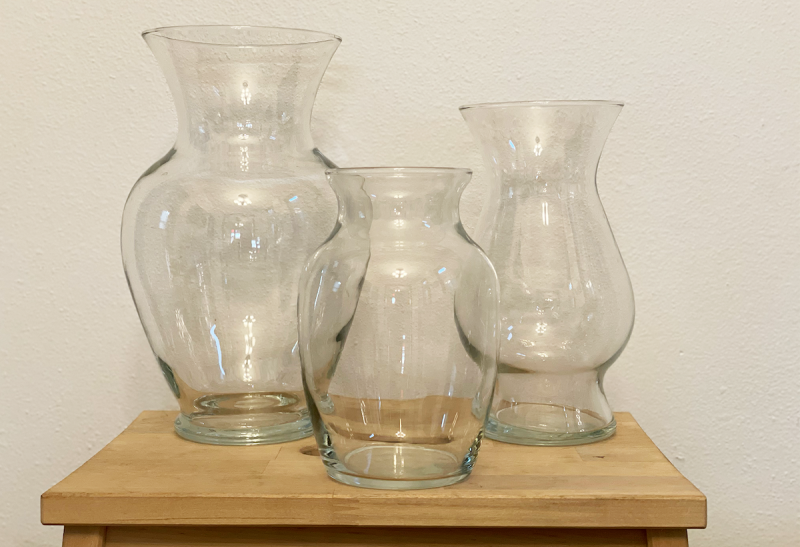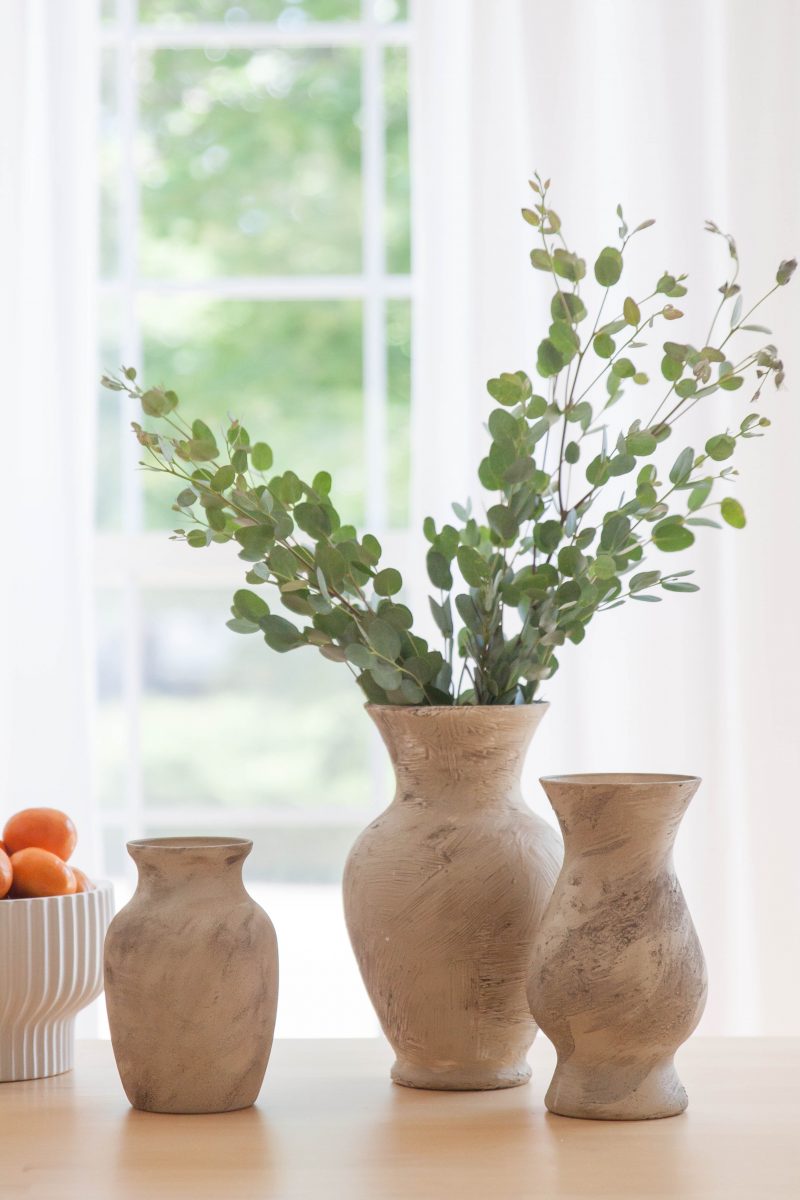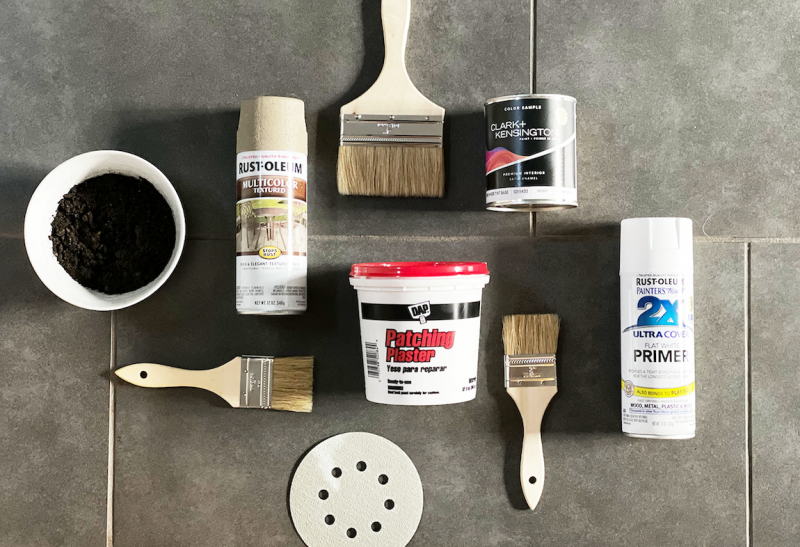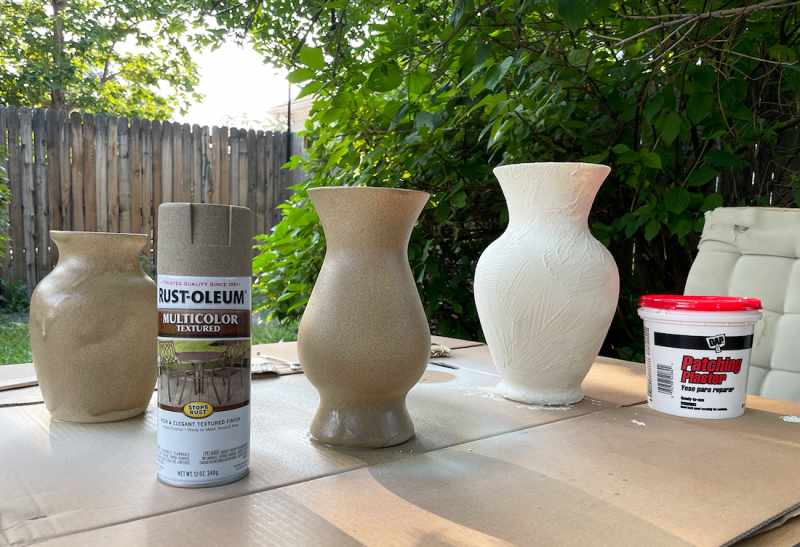It’s no secret that the design world has a thing for artisan pottery. From vases and bowls to platters, planters, and plates, so many of our favorite projects are littered with these textural touches. “Ceramic pieces add a beautiful touch to any room — they’re sculptural and interesting to look at, adding texture and dimension to shelving, coffee tables, and more. And bonus they act as vessels for our favorite flowers or dried stems,” notes Brady Burke, our lead designer.
But buying these vessels brand-new isn’t exactly cheap, especially if you’re going the hand-thrown, hand-painted route. So, to be able to afford our addiction to Trader Joe’s floral department, we thought we’d try the DIY Artisan Pottery trend that is taking the internet by storm. “With a quick trip to the thrift store and Ace Hardware, we are well on our way to making our kitchen feel like the Italian countryside of our dreams,” adds Burke.
Ahead, find Brady’s five-step pottery DIY in his own words (and yes, it actually includes dirt from your garden).
Before

After

Everything You'll Need
- Your chosen glass vessel — I went with thrifted vases
- White spray primer
- Small container of plaster
- Wide bristle paint brush or sponge
- A sample size of tan, beige, or ivory paint (dealer’s choice)
- A small bowl of dirt from your backyard
- Optional: For varying finishes and textures, you can try Rust-Oleum Stone Creations Spray, Plaster of Paris, DecoArt Texture: Dimensional Acrylic Paint, or Acrylic Paint mixed with Baking soda.

How to get the look in 5 easy steps:
Step One: Clean and dry your vessel and remove any stickers or residue.
Step Two: Prime the entire surface with the white spray primer so the plaster has something to adhere to.
Step Three: Depending on how much texture is desired, apply 1-2 coats of plaster to the entire surface and let it dry completely.

Step Four: Once dry, you can use a few different methods to “age” the plaster and achieve the artisan pottery look. In general, this step took a bit of trial and error — I played around with my supplies to get the look I desired! Here are a few techniques to get you started, but just have fun with it:
- Water down a small sample of paint and gently brush on in different areas to achieve different levels of tone throughout.
- Mix water with finely ground dirt from your garden and brush across the surface to gently stain and darken areas. Use a dry brush to dust away excess dirt once dry.
- My favorite technique was used on the smallest vase — I applied the white spray primer followed by a textured spray paint, a standard beige paint, and then brushed on dry dirt from my garden. The dry dirt added an antiqued and weathered look without overly darkening or shadowing the vase.
Step Five: Let your finished piece dry, then style in home and enjoy!

Overall, I’d give the overall DIY process a six out of 10. While it was super fun and easy, the results varied and I really had to finesse my technique to get the look I wanted. For example, when I started out I thought the plaster would look best, but I may have gotten a little heavy-handed with the paint and dirt, so it turned out a bit darker than I’d hoped.
Next time around, I’d like to try a different application of plaster rather than a paintbrush to eliminate some of the texture, and I’d probably use a lighter paint color, or the same color mixed with water, and finish it off with dry dirt. I’d also like to try mixing plaster with paint before I apply to see if that adds the varied color and texture I was after!

As with any DIY endeavor, there are always lessons to be learned, but let’s face it, that’s half the fun. If you’re looking to put a more personal touch on your space — maybe even some styling suggestions to best show-off your DIY creations — our designers are ready and waiting. Take our style quiz to kick off your next home project.

